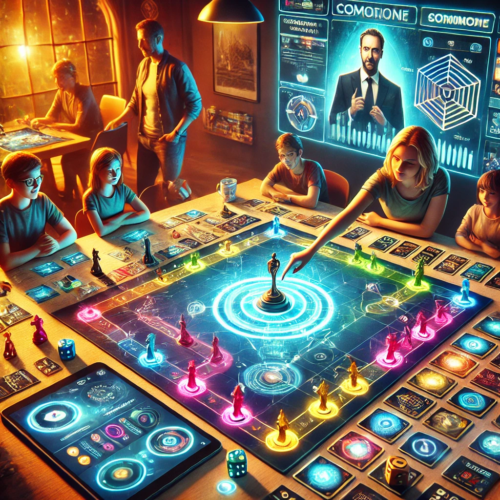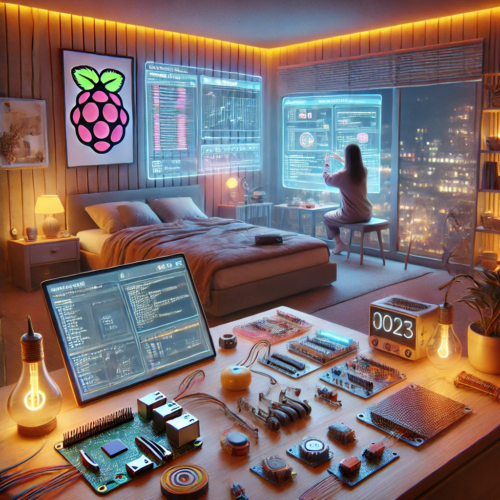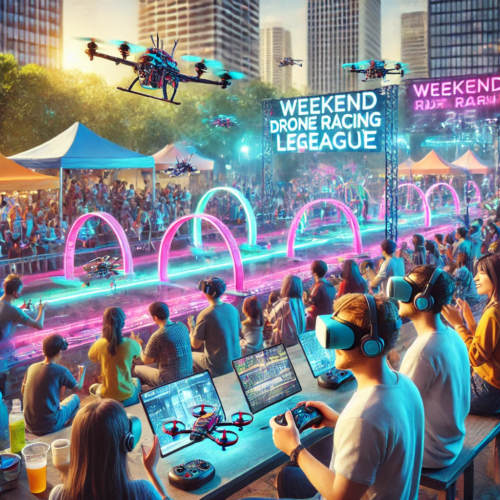Introduction
Sometimes, in the heart of a technology-driven world, a curious wave of nostalgia sweeps across our collective psyche. People suddenly get tired of swiping, tapping, or scanning screens and yearn to experience something tangible. Enter analog hobbies—like painting, knitting, and vinyl collecting—activities once presumed outdated but now finding renewed vigor in our digital era. It’s like rummaging through Grandma’s attic only to stumble upon a treasure you never knew you needed.
Before we dive in, let me tell you about that one evening when I found an old vinyl record in my late uncle’s dusty trunk: the scratched cover, the faint smell of cardboard, the swirl of the record. Although I had all the music in the world at my fingertips (thanks to streaming services), I found myself more enthralled with that turntable experience than I had been with digital playlists in a long time. Why do so many people report the same sense of magic when unraveling yarn or flipping through pages in a scrapbook? Let’s explore this phenomenon while weaving in government insights, political news, research-lab studies, and celebrity endorsements that champion these artisanal passions.
The Government’s Subtle Support for Analog Pursuits
You might wonder, “Why is the government even remotely interested in analog hobbies?” Well, in certain corners of local and federal systems, you’ll find small grants or community-based funding initiatives that encourage citizens to participate in artisanal crafts. For instance, some municipalities have begun promoting communal knitting circles to keep seniors socially active.
- Government-run community centers might offer free painting classes.
- Local libraries receive grants to host workshops on embroidery.
- Youth clubs obtain subsidies for traditional music sessions using analog equipment.
A Slight Political Twist
In various parliamentary debates, officials occasionally highlight the mental health benefits of slowing down with hands-on activities—especially in the age of relentless digital overstimulation. While not all politicians agree on the budget allocations, anecdotal statements reveal that bridging the “digital divide” might involve more than just providing internet access; it’s also about preserving intangible cultural heritages. Some progressive councils point out that engaging with analog pastimes fosters creativity, communal ties, and skill-building that purely online activities may not fully replicate.
Interestingly, a small coalition in Europe pitched the idea of “DIY therapy vouchers,” where individuals receive modest stipends for purchasing painting supplies or analog camera film. Although these pilot programs remain in the early stage, they demonstrate how governments are experimenting with policies to encourage citizens to unplug. Of course, you might find contradictory opinions about how money should be spent in an economy that leans heavily on digital innovation, revealing a mild tension between driving digital progress and safeguarding older traditions.

“Community center notice promoting painting and knitting workshops”
Political News: Analog Hobbies on the Global Stage
Perhaps it’s a bit surprising to see major political figures referencing the joys of old-fashioned crafting in campaign speeches. However, in the last few years, some well-known public figures have discovered that talking about the emotional calm found in painting or crocheting resonates with voters. Indeed, campaign managers appear to be recognizing that people need respite from the churn of digital living. So you may stumble upon photos of politicians holding brushes at a local art fair or trying their hand at crocheting to appear more relatable.
Now, does this actually shift policy? In some cases, yes. Officials have advocated for public funding aimed at supporting analog hobbies in aging populations, endorsing them as a means of bolstering mental well-being. Others remain skeptical, insisting these campaigns might be part political theater, part genuine interest. But hey, if it leads to more knitting clubs in public parks, I suppose there’s some communal benefit in that, even if the impetus feels a bit contradictory. We get these lovely pockets of analog charm, ironically promoted via social media hashtags (#AnalogRevival, #HobbiesNotApps).
Research Labs and Scientists Weigh In
Scholarly Curiosity
The story doesn’t end with political or government interest. Research labs, especially those focusing on psychology and sociology, have spent countless hours examining why painting, knitting, or collecting vinyl resonates with people’s emotional and cognitive states. For instance, a team of neuroscientists at a Midwestern university used functional MRI scans to assess how tactile engagement in crafts correlates with stress reduction. Their findings revealed that the act of holding a paintbrush or feeling yarn between your fingers triggered specific neural pathways associated with relaxation and creativity—pathways that remain less active when simply scrolling through smartphone apps.
Key Observations from Research Labs
- Analog tasks involve engaging multiple senses: touch, sight, even smell (hello, old book smell!).
- Repetitive motions (like knitting stitches) appear to induce a meditative mental state.
- The sense of accomplishment upon finishing a tangible project can boost self-esteem.
- Collaboration in analog hobby groups fosters stronger social bonds than purely virtual communities (though online groups have their perks, too).
These scientific threads underscore what many intuitive hobbyists already sense: analog crafts serve as a balm for digital-age burnout. Some labs even push forward the notion of “Digital Detox Interventions,” recommending that we allocate at least one day a week to tactile creativity—like shaping clay or dabbling in watercolor painting—to recalibrate our overstimulated brains.
Celebrity Voices and Cultural Trends
There’s something both whimsical and powerful about a celebrity endorsement of analog pursuits. You might see big-name Hollywood stars talking up the joys of knitting socks during interviews. Or that famous pop singer who went live on social media strumming a vintage guitar, praising the crisp analog sound. Even classic rock icons often proclaim how vinyl records bring a richer, warmer tone that digital files simply can’t replicate.
A Surprising Media Frenzy
Occasionally, these celeb statements generate quite a buzz. Fans leap to emulate their favorite stars: “If So-and-So is crocheting scarves, then sign me up!” And, ironically, this phenomenon that draws us away from screens often gains momentum via screen-based platforms like Instagram Reels or TikTok. Nonetheless, the result is the same: more folks rummage through craft stores or vinyl record shops, fueling a wave of fresh interest in these old-school hobbies. You might call it a charming contradiction—digital technology fueling an analog renaissance.

Celebrity influencer showing off knitting project in an Instagram post
Perspectives from Older Generations
Nostalgia and Tradition
Chat with your grandparents, and you might find them chuckling at the sudden revival of something that never really vanished from their lives. My own grandmother—bless her crocheted tablecloths—once said, “I’ve been knitting for 60 years. Didn’t know it was such a big deal now!” For older folks, painting, embroidery, or collecting classic records might not be a “trendy comeback” but a routine pastime that’s simply garnered fresh attention.
Community and Social Aspects
To them, these hobbies represent continuity, heritage, and comfort. Sometimes, you’ll see older crafters hosting workshops in community halls, bridging generational gaps. One might witness an elderly neighbor teaching a college student how to repair a vintage turntable or guiding a younger crowd in a quilting bee. In fact, some government-funded senior centers emphasize these cross-generational crafts to combat isolation and keep minds sharp—good news all around!
Yet, a subtle shift in perspective can occur: older people appreciate the enthusiasm of youth diving into these activities, although some occasionally express confusion about the “fuss” made on social media. Still, they’re mostly thrilled that new generations are preserving what they’ve long cherished.
Youth: Discovering the Charm of Offline Creativity
The Surprising Appeal to Millennials and Gen Z
In a twist that might make a social media influencer chuckle, many younger individuals are discovering that an offline creative process can be downright liberating. After all, juggling constant notifications can feel overwhelming. So the quiet process of painting a canvas or the rhythmic loop of knitting stitches offers a respite from hyper-connectivity.
- Experimentation: Young crafters enjoy mixing mediums, combining acrylics and digital design, or repurposing old records into home décor.
- Social Sharing: Even as they seek offline experiences, they often share the results online—an Instagram story featuring a freshly finished painting or a TikTok about how to thread a needle.
- Cultural Vibes: Vintage aesthetics (think ‘70s record players, retro cameras) continue to thrive on social media platforms, ironically fueling analog mania in the 2020s—and, one might predict, well into 2025.
I once asked a friend, “What’s the draw of rummaging through a vinyl record store when you could literally just stream any song?” Her response was telling: “It feels like an adventure, each record a treasure waiting to be discovered.” That hunt fosters a personal relationship with the music in ways that curated streaming playlists rarely match. And the “big cover art”? That’s a conversation starter.
Riding the Analog Wave into 2025 and Beyond
Futuristic Concepts in Analog Hobbies
It might seem contradictory to associate “futuristic” with “analog,” but the synergy is more fluid than you’d expect. For instance, 3D-printing labs are blending old-school sculpting techniques with new technology. Some vinyl collectors use NFC chips embedded in record sleeves to store digital extras, bridging the gap between tangible media and cloud-based enhancements.
Relevant Political News
- Certain countries are discussing legislation to preserve intangible cultural assets, which includes classic craft traditions.
- Tech-savvy entrepreneurs are capitalizing on the new wave, launching subscription boxes for sewing, painting, or analog photography gear.
- A few local governments in Asia and Europe are exploring small business loans specifically dedicated to analog or heritage crafts, championing local artisans in an ever-expanding digital marketplace.
Research Lab Insights: Looking Ahead
In various labs worldwide, sociologists hypothesize that as digital technology continues to dominate, more pockets of analog communities will pop up, seeking “authentic” experiences and tangible escapism. These labs predict that by 2025, we might see an even bigger wave of offline clubs: from retro board game gatherings to large painting festivals in city squares. The slight gap in logic is whether technology is fueling or hampering this renaissance—maybe both simultaneously.
[Image Description: A group of young people attending a vinyl swap event, alt=“Enthusiastic crowd exchanging vinyl records at a local fair”]
The Heartfelt Reasons Behind the Resurgence
1. A Quest for Mindfulness
The concept of mindfulness is tossed around rather generously nowadays, but slow, deliberate hobbies naturally produce a mindful state. The repetitive action of knitting or the meticulous layering of paint can transport you into a flow state. People, ironically, find the biggest escape from digital overload by immersing in these offline pastimes.
2. Community Connection
In an era of digital “friends” and “followers,” real-world hobby groups offer face-to-face interactions. Government notes suggest that such gatherings reduce loneliness, promote mental well-being, and create robust support networks—especially crucial for vulnerable populations. Even if there’s a dash of generational friction or awkward humor in the crocheting circle, that sense of belonging remains uniquely analog.
3. Tangible Accomplishment
Swiping through an app doesn’t replicate the same satisfaction as seeing a finished painting or wearing a hand-knit scarf. Having a physical manifestation of one’s creativity resonates deeply with many, especially in a society that’s grown accustomed to intangible data. Psychologists further highlight how accomplishing small tasks in the analog realm nurtures feelings of self-efficacy, fueling positivity and resilience.
4. A Nostalgic, Physical Connection
Our physical senses anchor us to the present moment in ways digital experiences can’t. The scratchy audio of vinyl or the distinct smell of paint can instantly elicit emotion. Indeed, this multi-sensory experience might be part of the reason more folks see analog hobbies as a haven from digital noise.
Contradictions and Complexities
Of course, not everyone applauds the analog comeback. Some critics question whether these hobbies, heavily promoted on social networks, are merely performative trends. A fraction of political pundits also argue that funneling public funds into “crafty endeavors” might ignore other pressing social issues. Are we burying our heads in coloring books while more serious problems loom? Possibly. Then again, one might retort that supporting mental well-being through creative outlets can pay dividends in the long term. The truth probably resides somewhere in the middle, swirling around like paint in water.
Another subtle contradiction is how technology itself has enabled a broader audience to discover, share, and celebrate analog hobbies. Yes, we’re going offline, but we’re letting the world know about it with hashtags and livestream tutorials. A tad awkward, but that’s life. Sometimes we walk that weird tightrope of wanting authenticity yet also craving connectivity.
External Links
- External Links & References
Frequently Asked Questions (FAQs)
1. Are analog hobbies more expensive than digital ones?
They can be, depending on the materials you choose. A vinyl collection might become pricey if you chase rare pressings. But painting or knitting can be done on a modest budget. Many local community centers or government-funded programs also offer free or low-cost supplies and classes.
2. Do I have to give up digital technology entirely?
Not at all. Many hobbyists strike a balance, using digital tools for inspiration (like tutorial videos) but engaging in analog experiences to find calm and creative expression. It’s about integration, not elimination.
3. How can I start an analog hobby if I’m a total beginner?
Explore local art shops, community centers, or even your library. Often, free workshops exist. Join an online group—ironic, I know—but it’s helpful for finding beginner tips on painting, knitting, or record collecting. Then, put your phone away and practice.
4. Are politicians really investing in analog initiatives?
In some places, yes. You’ll find city councils supporting art fairs, knitting circles, or vinyl clubs. Funding might be small, but the acknowledgment is there. Always check municipal websites or local news for the latest programs and grants.
5. How do scientists prove analog hobbies are beneficial?
Researchers use tools like surveys, interviews, brain scans, and physiological measurements (like heart rate). They’ve found that analog tasks can reduce stress, foster creativity, and promote social interaction. Plenty of peer-reviewed studies back these findings, giving credence to what many folks experience firsthand.
Conclusion: Embrace the Imperfect, Relish the Physical
In a world relentlessly dominated by digital interfaces, the revival of analog hobbies may just be the breath of fresh air many of us secretly crave. We see endorsements at the government level, curious applause from politicians, thorough data from scientific research labs, enthusiastic nods from celebrities, and heartfelt approval from older generations who’ve been at it all along. Meanwhile, younger people are delighting in the tangible satisfaction these tactile tasks provide.
Now, does the analog resurgence solve every social or political challenge? Of course not. We still live in a digital economy, and technology isn’t going anywhere. But, as 2025 unfolds, it feels increasingly clear that investing a bit of our time—whether painting an abstract masterpiece, knitting a cozy scarf, or spinning a vinyl album—can ground us in the present moment. There’s a certain power in that. There’s a certain beauty in feeling paint under your fingernails or hearing the crackle of a needle on a record. And maybe that’s exactly what we need, even if it’s just for an hour a day.
Let’s continue this journey of discovering (or rediscovering) the pleasures of analog. Grab that paintbrush, needle, record player, or camera film. Then, if you must, share your joy online—no shame there. After all, the world needs more of that sweet, unhurried authenticity. And if a little contradiction sneaks in, so be it. Life’s a glorious puzzle of paradoxes, and we’re just painting, knitting, or collecting our way through.
Call to Action
If you enjoyed diving into this analog renaissance, take the next step! Try a new analog hobby this week—whether it’s painting, knitting, or sifting through a vinyl crate at a local music store. Then, pop back here and let us know about your experience in the comments or on social media (some irony intended). And don’t forget to check out our mindful lifestyle piece for more insights on blending online and offline worlds in harmony. Happy creating!




